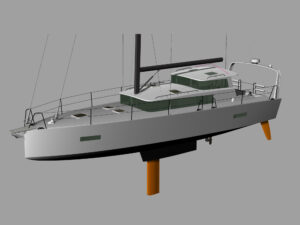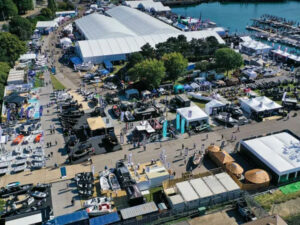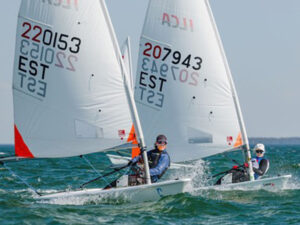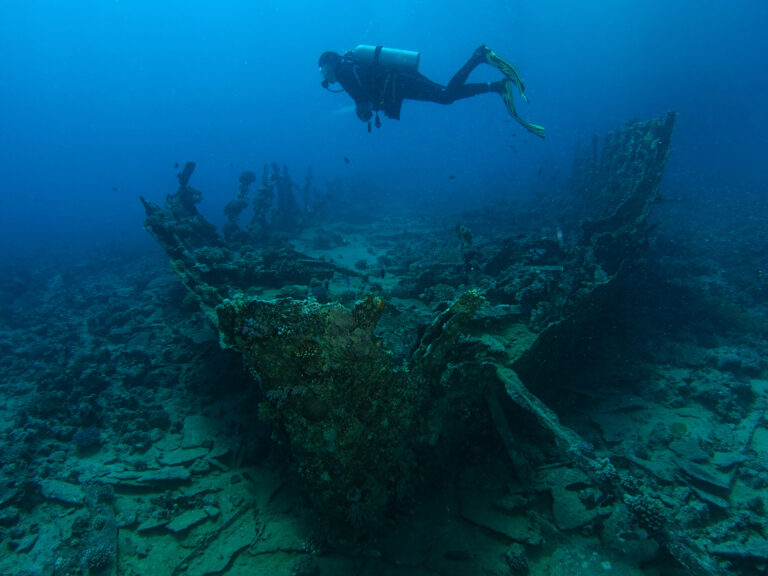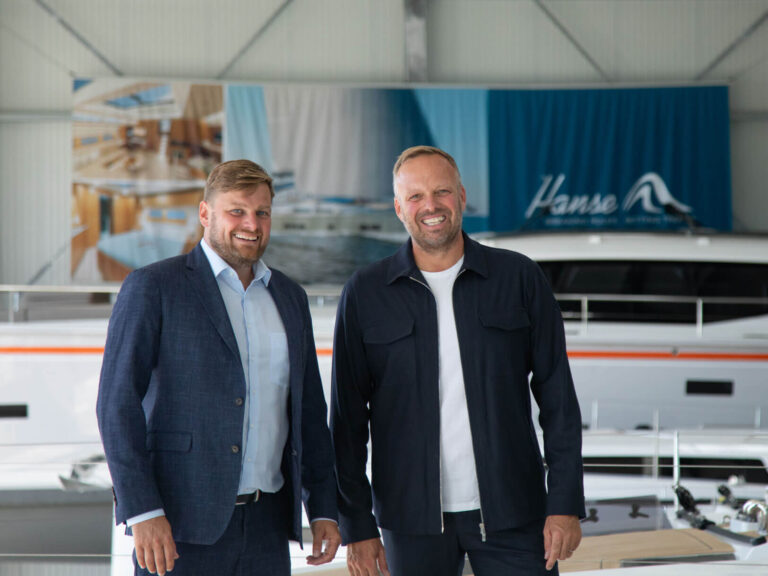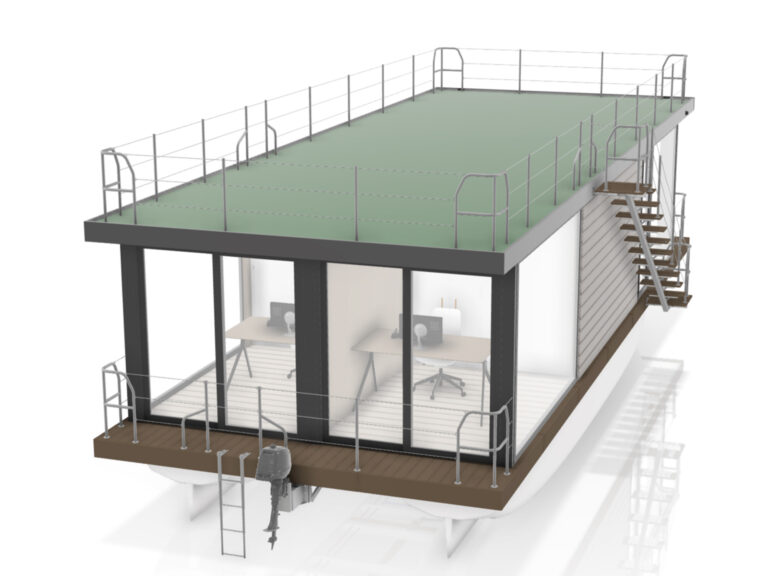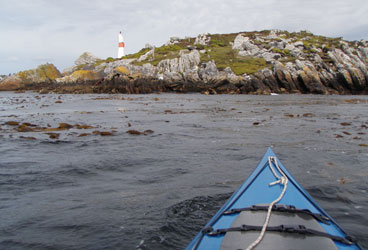
kayaking the Falklands
Let’s just say I took my eye off the ball for a moment. It was a little over a year ago on my voyage Around the Americas aboard the 64-foot cutter Ocean Watch, a story that’s been well chronicled in this blog and in the pages of Cruising World. But I haven’t told many people this particular tale…until now.
In the midst of several cold and rainy days in the Falkland Island harbor of Port Stanley, I was getting a little stir crazy hanging around the boat, so I layered up and tossed my 14-foot carbon fiber Little Wing kayak into the drink. I was only planning a little foray around the shoreline, but it wasn’t long before the entrance to the port started looking pretty inviting, so I altered course to pop outside.
It was a fun but rather uneventful paddle until I turned around to head back to Ocean Watch, at which point I spied a bunch of cormorants on the rocks near the marker perched on an outcropping signaling the entrance to the harbor. The water was murky and full of kelp, so I couldn’t really see what I was getting myself into…and, yes, I’ve been sailing and kayaking for decades and really should know better. In any event, as the birds drew ever closer, I stopped paddling for a few moments to dig out my Olympus waterproof camera to take a couple of shots. With little propulsion, however, the kayak blew sideways like a feather; completely preoccupied with photographing the birds, I barely took notice.
That is, until my sweet little kayak came to a sudden and jarring halt with a sickening, scraping crunch. With a couple of exceptions, we’d sailed Ocean Watch through the narrow and often very shallow Northwest Passage with only a couple of minor groundings. Now, thousands of miles later, and in a kayak no less, I was stuck on a sharp rock, hard aground.
Extricating myself from the situation was no big deal, but the ride back to OW was not a pleasant one: I wasn’t looking forward to seeing the damage I’d inflicted to the boat by my absentmindedness. My only real solace were the words that Ted Warren, the designer of the Little Wings, had told me when he lent me the boat prior to the expedition: “Don’t baby it. Use it hard. That’s what she’s meant for. She can take it. Her lifespan is infinite. It’s built out of the same materials Boeing uses in their 787.” Well, once I pulled the kayak back aboard, I could see Ted, who runs his company, Warren Light Craft, in partnership with his son, Zac, was right. The structural integrity of the carbon/epoxy/CoreCell foam sandwich had not been compromised whatsoever. But, man, that sure was one nasty ding directly amidships where I’d nailed the rock.
For me, ocean kayaking has come to enhance my cruising and sailing experiences, and I can’t recommend it highly enough for sailors of all stripes. It’s great exercise and really gives you a chance to explore your surroundings—especially the shallow ones—once the hook is down. I realize not everyone has the space to store rigid kayaks like a Little Wing 14 (even though it only weighs 26 pounds), but inflatable kayaks like the ones Hobie has introduced (their 12-foot Mirage i12s only weighs about 50 pounds, can be propelled by foot-controlled underwater fins as well as a traditional paddle, and even has an optional sailing rig) can be stashed away on almost any size cruising boat.
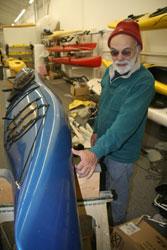
In any event, I became so enamored by my Little Wing 14, which I paddled almost every time we made an extended stop on our circumnavigation of the Americas—for details on the company and their line of boats, visit their website (www.warrenlightcraft.com)—that last October, at the U.S. Sailboat Show in Annapolis, Maryland, I purchased my very used 14-footer from the Warrens, and then came clean about some of the, ahem, misadventures to which I’d subjected it on many an icy, rocky shore.
“Would it be tough to touch up and repair any dents or dings?” I’d asked at the time. Nope, I was told, they do it all the time.
Here in the Northeast, it’s not exactly breaking news that it’s been a harsh winter, and I haven’t been tempted to attempt even a short spin around Newport Harbor, right down the street from my Rhode Island home. But I sure have been thinking about getting back on the water. So earlier this week, I tossed my kayak onto the racks of my pick-up and drove up to the Warren’s operation in Salem, Massachusetts, for a “rehab” mission. Given the 13-month torture test I’d put it through, I reckoned I had a kayak version of Charlie Sheen in tow. I had no idea what Ted and Zac would make of the boat—it’s hull No. 1 of the LW 14 line, and a boat they’d professed great affection for—and arrived in Salem with no small sense of trepidation.
But when Ted saw the boat, he was completely unfazed. “Oh, this is going to be easy,” he said. “We’re laying up another blue boat right now, we can paint them both at the same time. She’s actually in very good shape. She’s happy. She’s used to rough treatment. She likes it. If you didn’t care about the cosmetics you could paddle her another ten years.”
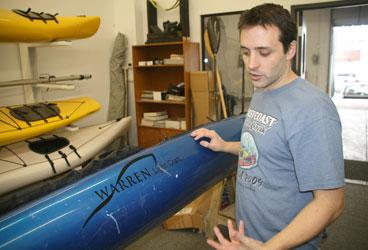
And when I showed Zac what had happened in the Falklands, he did raise an eyebrow—I think it was meant for me, not the boat—but he was equally nonplussed. “The foam core is the key,” he said. “It’s very flexible. You wouldn’t have wanted to do that in a fiberglass kayak. It’s good to see one of our boats that has been used this hard. It makes us confident of our construction.”
As it turns out, the Warrens are now offering “Expedition” versions of their boats with extra layers of carbon fiber on the underbodies. And they’re also introducing a new 20-foot tandem model that has an optional sailing rig. “It’s for crazy guys like you,” said Ted. “You should take one of those through the Northwest Passage.”
I’m going to have to give that one some thought; it may take somebody a lot kookier than me for that escapade. Knowing what I know now, I reckon the boat could make it, no problem. But all I have to do is look in the mirror to see the potential weak link.


